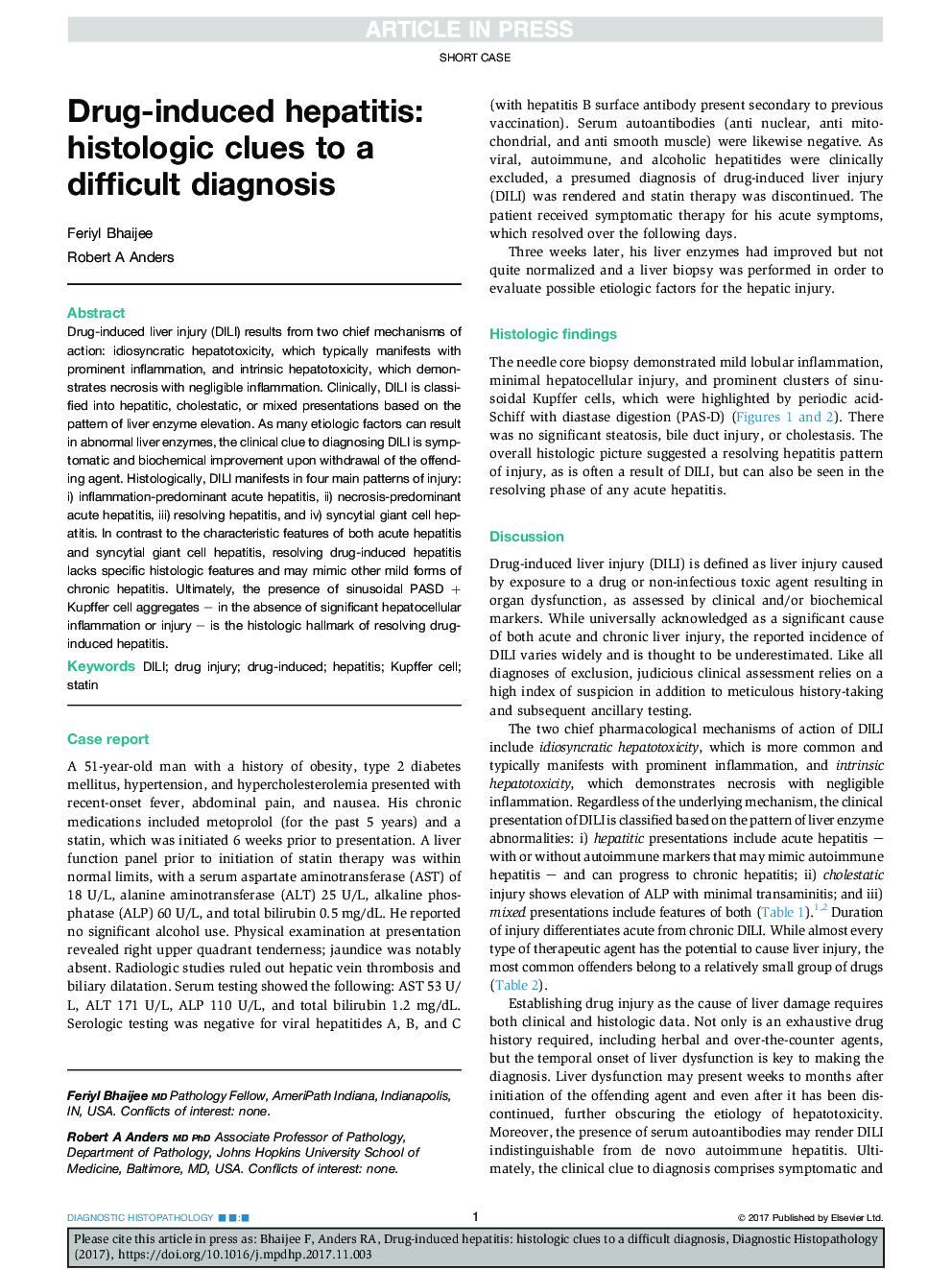| کد مقاله | کد نشریه | سال انتشار | مقاله انگلیسی | نسخه تمام متن |
|---|---|---|---|---|
| 8807339 | 1606603 | 2017 | 4 صفحه PDF | دانلود رایگان |
عنوان انگلیسی مقاله ISI
Drug-induced hepatitis: histologic clues to a difficult diagnosis
ترجمه فارسی عنوان
هپاتیت ناشی از مواد مخدر: سرنخ های بافت شناسی به یک تشخیص دشوار است
دانلود مقاله + سفارش ترجمه
دانلود مقاله ISI انگلیسی
رایگان برای ایرانیان
کلمات کلیدی
موضوعات مرتبط
علوم پزشکی و سلامت
پزشکی و دندانپزشکی
آسیبشناسی و فناوری پزشکی
چکیده انگلیسی
Drug-induced liver injury (DILI) results from two chief mechanisms of action: idiosyncratic hepatotoxicity, which typically manifests with prominent inflammation, and intrinsic hepatotoxicity, which demonstrates necrosis with negligible inflammation. Clinically, DILI is classified into hepatitic, cholestatic, or mixed presentations based on the pattern of liver enzyme elevation. As many etiologic factors can result in abnormal liver enzymes, the clinical clue to diagnosing DILI is symptomatic and biochemical improvement upon withdrawal of the offending agent. Histologically, DILI manifests in four main patterns of injury: i) inflammation-predominant acute hepatitis, ii) necrosis-predominant acute hepatitis, iii) resolving hepatitis, and iv) syncytial giant cell hepatitis. In contrast to the characteristic features of both acute hepatitis and syncytial giant cell hepatitis, resolving drug-induced hepatitis lacks specific histologic features and may mimic other mild forms of chronic hepatitis. Ultimately, the presence of sinusoidal PASD + Kupffer cell aggregates - in the absence of significant hepatocellular inflammation or injury - is the histologic hallmark of resolving drug-induced hepatitis.
ناشر
Database: Elsevier - ScienceDirect (ساینس دایرکت)
Journal: Diagnostic Histopathology - Volume 23, Issue 12, December 2017, Pages 559-562
Journal: Diagnostic Histopathology - Volume 23, Issue 12, December 2017, Pages 559-562
نویسندگان
Feriyl Bhaijee, Robert A. Anders,
